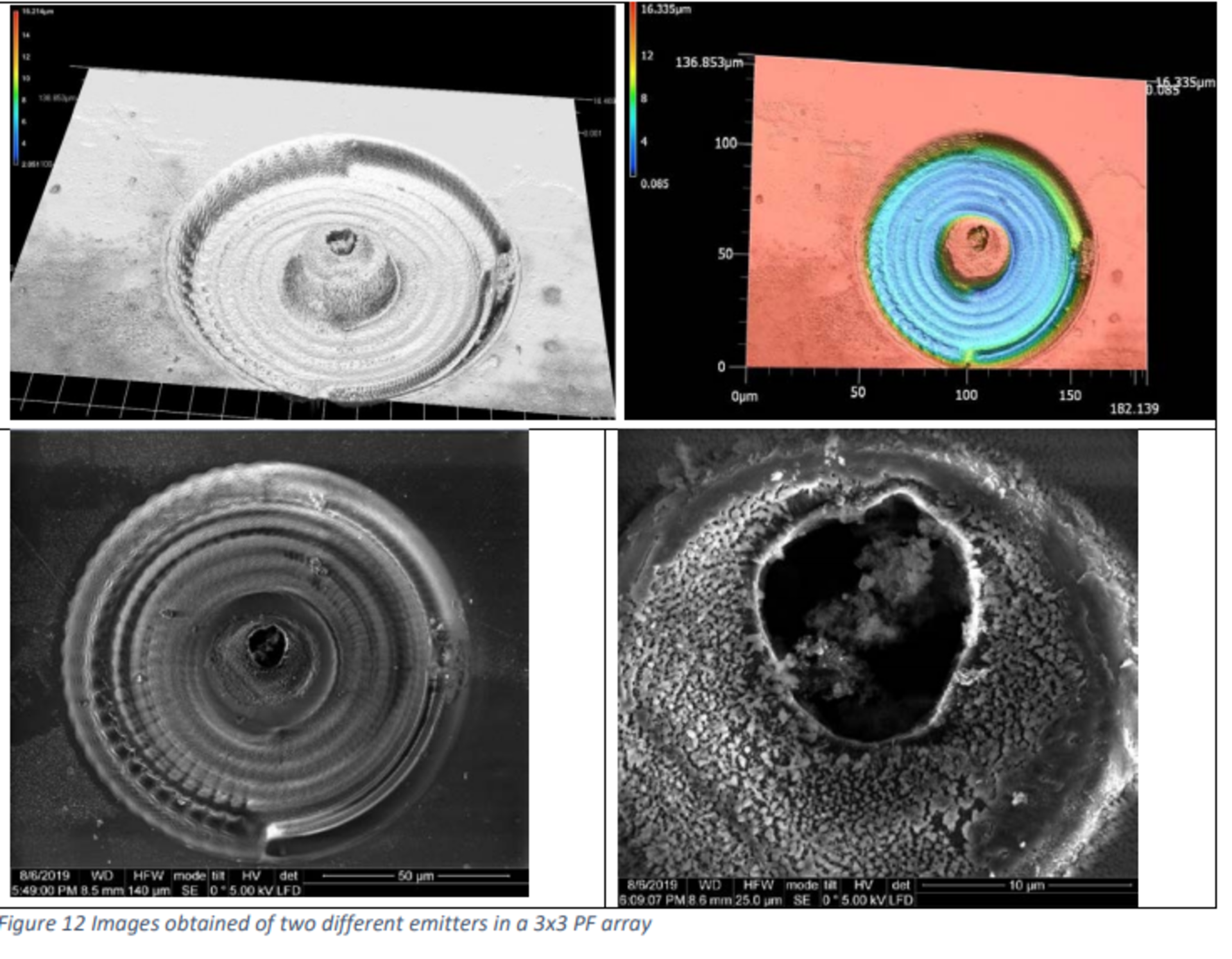Further developments of electrospray colloid electric propulsion system
A recently closed GSTP activity with Queen Mary University of London, UK, has advanced the development of electrospray colloid electric propulsion technology.
An Electrospray Colloid Electric Propulsion System (ECEPS) consists of many subsystems including a colloid thrust head (CTH), a propellant supply and feed system (PSFS) and a power processing unit (PPU). The main interest in electrospray devices is their use on CubeSats and other forms of nanosatellites for attitude control applications. These systems may also extend the spacecraft’s lifetime by counteracting the drag force experienced in low Earth orbit.
This activity looked at previous colloid thrusters to develop and design a colloid thrust head design using low-cost manufacturing techniques. In particular, the activity wanted to address a system primarily aimed at applications which require operation in an ionic dominated regime. This is required for missions which require higher specific impulse, or require high precision and low noise thrust.
The eventual design was built using commercially available technology, and the principal element of the colloid thrust head was a propulsive film that could be fabricated using printed circuit board manufacturing techniques, which also makes the thruster highly appropriate to a wide range of missions – in particular for small satellites ranging from 3-U CubeSats to those of a few hundred kilograms.
Three design iterations of the propulsive films were undertaken during the activity to optimise both the electric field structure and to provide suitable control of the fluid supply system. The final set of propulsive films that were delivered were tested in atmosphere.
At the assembly level the colloid thrust head was built using a combination of two different colloid thrust heads operating in alternative polarities. It consisted of the dielectric body (where the electrodes will be embedded) and the hydraulic impedance system. One of the main design decisions for the colloid thrust head is the specific configuration for the embedded electrodes. Two options were found to be possible: using a single electrode to extract and accelerate the beam to the final velocity; or using two separately controlled electrodes, one principally extracts (with some acceleration) and the other accelerates the beam. In either case, a separate (non-embedded) electrode was required to electrically connect to the propellant.
Next, the activity intends to combine the colloid thruster head that has been developed with a feed system and power supply.
G617-190MP was completed in March 2020.















 Germany
Germany
 Austria
Austria
 Belgium
Belgium
 Denmark
Denmark
 Spain
Spain
 Estonia
Estonia
 Finland
Finland
 France
France
 Greece
Greece
 Hungary
Hungary
 Ireland
Ireland
 Italy
Italy
 Luxembourg
Luxembourg
 Norway
Norway
 The Netherlands
The Netherlands
 Poland
Poland
 Portugal
Portugal
 Czechia
Czechia
 Romania
Romania
 United Kingdom
United Kingdom
 Slovenia
Slovenia
 Sweden
Sweden
 Switzerland
Switzerland


























